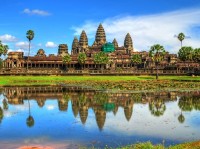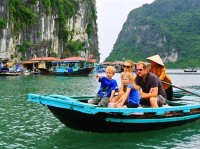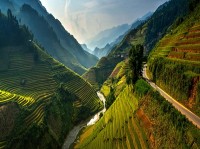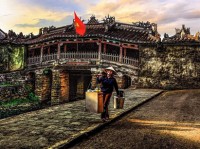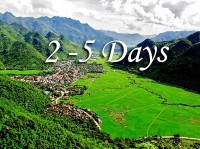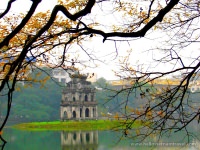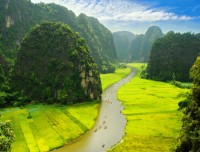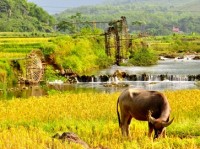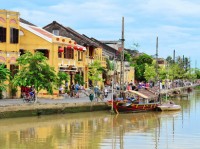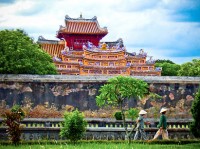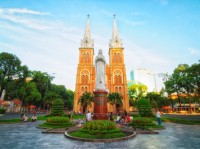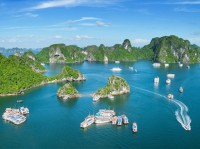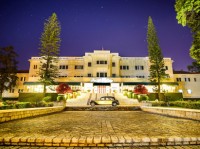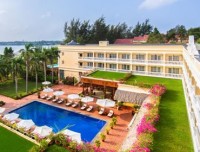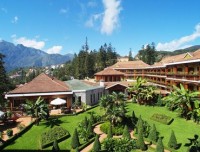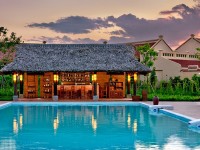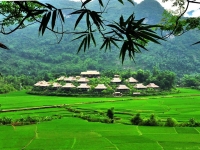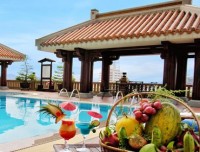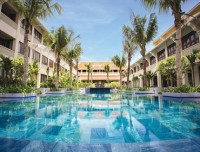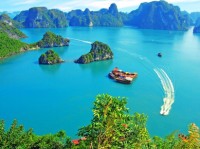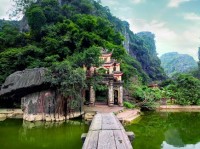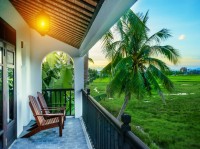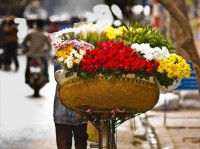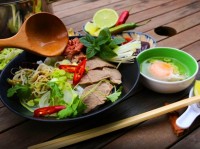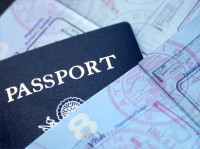The Imperial City is a famous tourist attraction of Hue. This ancient citadel was recognized as a UNESCO heritage for not only bearing an amazing design but witnessing one of the most long - lasting feudal dynasty of Vietnam. Let take a look at some highlight spots in this complex palace.
A Brief Look at The History of The Purple Forbidden City
Was once home and capital of the last royal dynasty of Vietnam – the Nguyen (1802 – 1945), Hue Forbidden city is an important part of the citadel palace complex starting to construct under the rule of Emperor Gia Long. The Imperial Enclosure is an outstanding structure of the Vietnamese feudalism taking more than 200 years to complete.
The design of the Forbidden City resembled to as the one in Beijing, China but caring the distinctive features of Vietnam culture and history. However, due to the effect of wars, it now remains only 20 major sites out of 148 historic buildings. Located on the bank of the Perfume River, the Forbidden City reserved only for the King and his family which included all the most convenient living conditions from eating, sleeping, working and entertaining. It was a citadel within the citadel within the citadel which seperated by brick walls, long moats and wide canals owing to protect the royal family from the potential invaders.
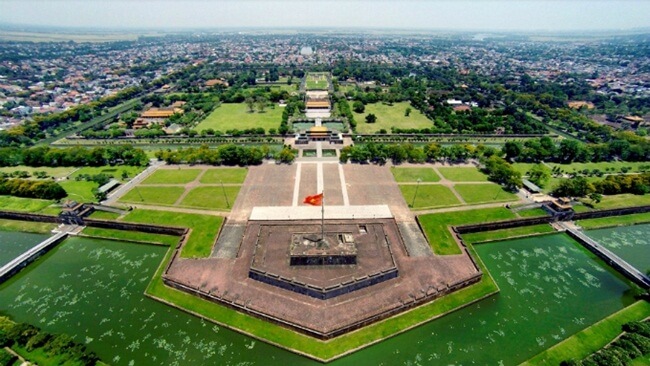
A panorama of the Imperial Citadel
Flag Tower – The Witness of History
To the south of the Citadel lies a majestic flag tower which is another attracting monument to visit in the Imperial city tour. Built in the sovereign of King Gia Long accompanied with the construction of the Forbidden city, the flagpole was used to fly the national flag.
The base contains 3 floors made of hard bricks and stones connecting to each other by the small paths inside. The pole has been replaced many times due to the destruction of wars until having its present look of 37 m height concrete pole. This flag tower is not only a witness of many up and down historical events of the country but also a perfect place to catch the sunrise and the spectacular view of the Citadel.

Dawn in the flag tower
Ngo Mon Gate - The Massive Architectural Work of Nguyen Empire.
Opposite to the flag tower is the main entrance to the Purple Forbidden city: the Meridian gate (Ngo Mon gate). The biggest one in the 4 entrances of Hue Citadel owning the great architectural values of Nguyen dynasty.
Constructed in 1833 under the reign of Emperor Minh Mang, the gate has the U – shape platform following its original in China. The central ground contains 3 main entrances which the yellow door in the middle was only used by the King while the mandarins passed the 2 side doors. On the top is the Ngu Phung Pavilion (or five phoenix pavilion) used to be an observation place of the Emperor over the external movements and important ceremonies. This site is also a historical witness to the end of the last feudal authority of Vietnam.

Ngo Mon gate
Thai Hoa Palace - The Symbol of the Royal's Power
One of the most important architectural works in the Imperial Enclosure - Thai Hoa palace used to be the place where Nguyen's Emperors ruled the country for more than 100 years.The name "Thai Hoa" means the supreme harmony between yin and yang, nature and human. If the harmony can be achieve, the country will be in peace and wealthy. This is also the target that every king of Nguyen Dynasty aims at.
Constructed in 1805, the palace has the special design supporting by 80 wood columns. The main decorative patterns are dragons playing with the clouds which represent for the meeting between the king and his mandarins. Thai hoa palace symbolizes for the power of the monarch where holds the most significant events like the coronation ceremony, the monthly court or the king's birthday. It is also houses the throne of the emperor. In front of the palace is the salutation court where officials used to stand waiting to meet the king.
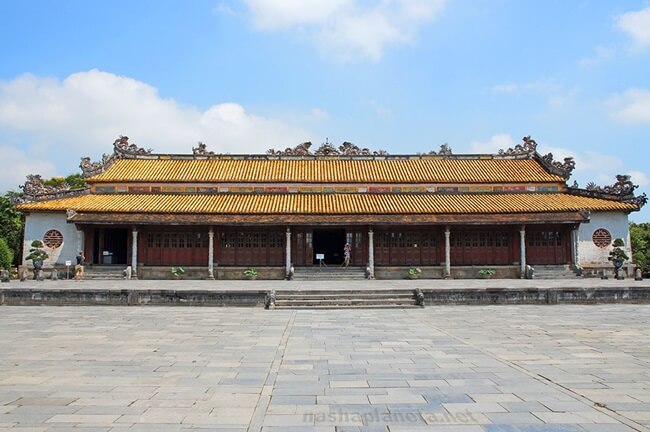
Thai Hoa Palace
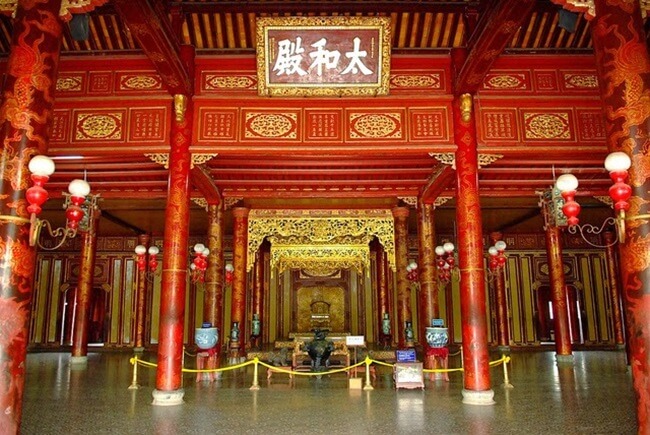
The Throne of the King inside Thai Hoa palace
Nine holy cannons – The Evidence of a Glorious Era
The nine holy cannons are a must - see landmark in the tour to Hue Imperial enclosure. They are considered as the bronze masterpieces of Vietnam for their historical and artistic values. They were made under the request of King Gia Long to celebrate their victory over the Tay Son dynasty. The cannons has the length of 5.1 m and weights about 10 tons melted from the bronze wares and weapons of the previous empire.
The 5 cannons took their names of the 5 elements (metal, wood, water, fire, and earth) meanwhile the other 4 represented to 4 seasons: spring, summer, autumn, winter. At first, the 9 cannons was placed either sides in front of Ngo Mon gate, then in the early 20th century, they were moved to the present location behind the The Nhon gate and Quang Duc gate. Although the cannons had not been fired before, the massive size and their sophisticated decorations still attract many tourists.
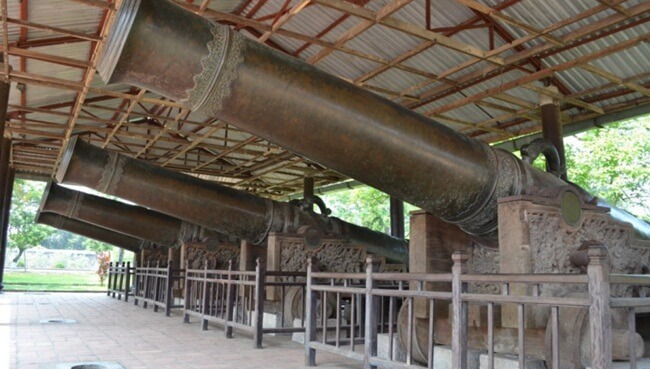
An image of the holy cannons
♦ Check out one of our
Hue Tours to discover this ancient kingdom.


